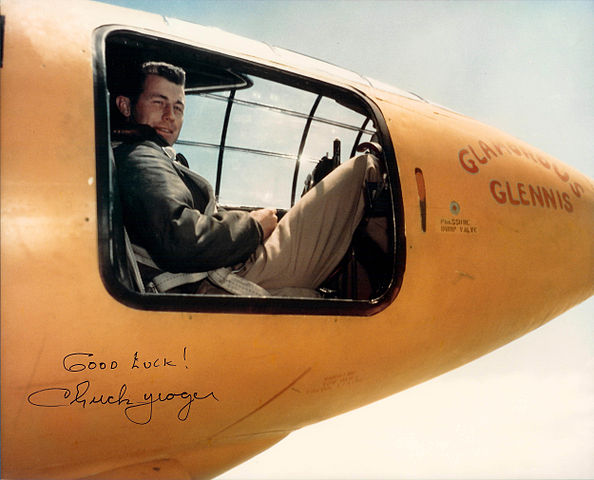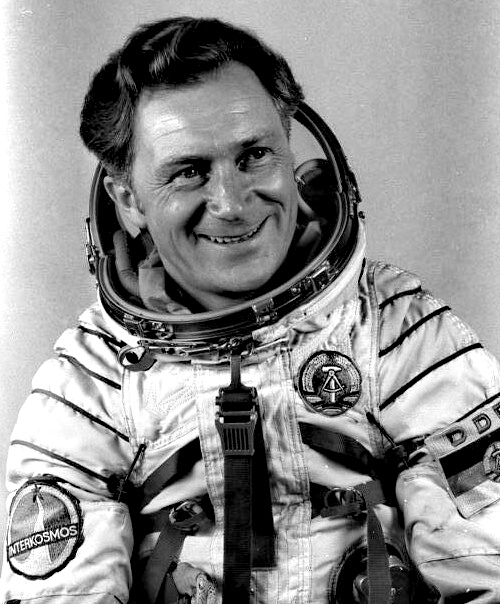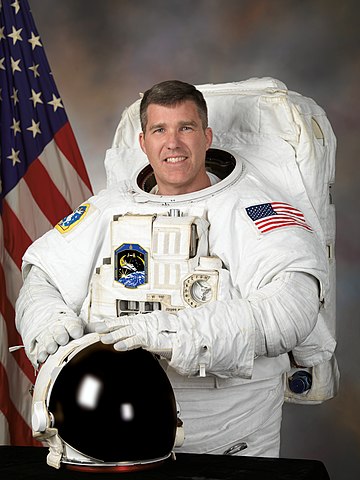
Space History for February 13
If you are not already a subscriber, you are welcome to enter your email address here to sign up to receive the Space History newsletter on a daily basis. Under no circumstances will we release your legitimate email address entered here to outside persons or organizations, and it will only be used for mailing the specific information you have requested.
| Enter your email address here: |
Unsubscribe instructions are included in every newsletter issue in case you decide you no longer wish to receive it.
Note: We record the IP address from which subscriptions are entered to help prevent SPAM abuses.
Race To Space
Someone will win the prize...
... but at what cost?
Visit RaceToSpaceProject.com
to find out more!
374
Halley's Comet passed perihelion in its ninth known passage, as determined from records by Chinese astronomers.
In 2000 years of observations since 240 BCE, Chinese records have never missed a return of Halley's Comet. From those records, Cowell and Crommelin computed the dates of perihelion passage as:
1. 15 May 240 BCE
2. 20 May 163 BCE
3. 15 August 87 BCE
4. 8 October 12 BCE
5. 26 January 66 CE
6. 25 March 141 CE
7. 6 April 218 CE
8. 7 April 295 CE
9. 13 February 374 CE
10. 3 July 451 CE
11. 15 November 530 CE
12. 26 March 607 CE
13. 26 November 684 CE
14. 10 June 760 CE
15. 25 February 837 CE
16. 17 July 912 CE
17. 2 September 989 CE
18. 25 March 1066 CE
19. 19 April 1145 CE
20. 10 September 1222 CE
21. 22.7 October 1301 CE
22. 8.8 November 1378 CE
23. 8.2 January 1456 CE
24. 25.8 August 1531 CE
25. 26.9 October 1607 CE
26. 14.8 September 1682 CE
27. 12.6 March 1758 CE
28. 15.9 November 1835 CE
29. 19.7 April 1910 CE
30. 9 February 1986 CE
Note that the precision of the dates from passage 21 onward could be computed with increased accuracy because of additional observations. However, at the time of their computation, the 1986 passage was still a future event. (The actual date was found from other sources.)
On 19 April 607, Comet 1P/607 H1 (Halley) approached within 0.0898 AU (13.5 million km, 8.4 million miles) of Earth. On 374-April-1.9, it had approached closer, having come within 0.0884 AU (13.2 million km, 8.2 million miles), and on 837-April-10.5, it became the third closest approach in history prior to 1900, passing within 0.0334 AU (5 million km, 3.1 million miles).
On 16 October 1982, astronomers David Jewitt and G. Edward Danielson using a CCD camera with the 5.1 m Hale telescope at Mt. Palomar Observatory were the first to detect Halley's Comet on its thirtieth recorded return.
See also The past orbit of Halley's Comet (SAO/NASA ADS)
See also Comet Close Approaches prior to 1900 (CNEOS)
See also History of Halley's Comet (Wikipedia)
See also Halley's Comet (CQ Press)
See also Comet 1P/Halley (Halley's Comet) (Smithsonian NASM)
ref: adsabs.harvard.edu
1633
Galileo Galilei arrived in Rome and was detained for his trial before the Inquisition for professing his belief that the Earth revolves around the Sun.
ref: www.history.com
1678
Tycho Brahe first sketched the "Tychonic system" of the solar system.
ref: www.ancientpages.com
1787
Died, Ruggiero Boscovich, physicist, astronomer, philosopher
Rudjer Joseph Boscovich (18 May 1711 - 13 February 1787), was a Jesuit, physicist, astronomer, mathematician, philosopher, diplomat and poet. He is famous for his atomic theory, given as a clear, precisely-formulated system utilizing principles of Newtonian mechanics. This work inspired Michael Faraday to develop field theory for electromagnetic interaction. Boscovich also gave many important contributions to astronomy, including the first geometric procedure for determining the equator of a rotating planet from three observations of a surface feature and for computing the orbit of a planet from three observations of its position.
ref: en.wikipedia.org
1852
Born, Johan L. E. Dreyer, Danish astronomer (New general catalogue of nebulae)
ref: en.wikipedia.org
1901
M. Wolf discovered asteroids #473 Nolli and #474 Prudentia.
1910
Born, William Bradford Shockley, physicist, (co-inventor of the transistor, with Bardeen and Brattain, Nobel 1956 "for their researches on semiconductors and their discovery of the transistor effect")
ref: www.nobelprize.org
1923
Born, Chuck Yeager, first supersonic pilot

Captain Chuck Yeager sitting in Bell X-1 cockpit at Edwards AFB, 1 March 1994
Source: Wikipedia
ref: en.wikipedia.org
1935
H. Van Gent discovered asteroids #1342 Brabantia, #1353 Maartje and #2378.
1937
Born, Sigmund Jahn (at Morgenrothe-Rautenkranz, Saxonia, German DR), Major General GDR Army, Soviet cosmonaut (Soyuz 31/29; over 7d 20.75h in spaceflight) (deceased)

Cosmonaut Sigmund Jahn (1978)
Credit: Bundesarchiv, Bild 183-T0709-148 / Peter Koard / CC-BY-SA
Source: Wikipedia
ref: www.spacefacts.de
1939
A. Wachmann discovered asteroid #1586 Thiele.
1939
Born, Valery I. Rozhdestvensky (at Leningrad, Russian SFSR), Soviet cosmonaut (Soyuz 23; just over 2d in spaceflight) (deceased)
Cosmonaut Valery Rozhdestvensky (right) on a 1977 USSR stamp
Source: Wikipedia
ref: www.spacefacts.de
1942
Born, Donald E. Williams (at Lafayette, Indiana, USA), Captain USN, NASA astronaut (STS 51D, STS 34; over 11d 23.5h total time in spaceflight) (deceased)

Astronaut Don Williams, NASA photo
Source: Wikipedia (www.jsc.nasa.gov unavailable February 2019)
ref: en.wikipedia.org
1964
Born, Stephen Gerard "Steve" Bowen (at Cohasset, Massachusetts, USA), Captain USN, NASA astronaut (STS 126, STS 132, STS 133; over 40d 10h total time in spaceflight)

Astronaut Steve Bowen, NASA photo JSC2008-E-039696 (7 April 2008)
Source: Wikipedia (spaceflight.nasa.gov killed 25 Feb 2021)
ref: en.wikipedia.org
1977
S. J. Bus discovered asteroid #2791 Paradise.
1980
Apollo Computer was incorporated in Chelmsford, MA. From 1980 to 1987, Apollo was the largest manufacturer of network workstations.
ref: en.wikipedia.org
1980
Harvard College discovered asteroids #2482 Perkin and #2658 Gingerich.
1980
USSR's Venera 12 spacecraft approached Comet Bradfield, and successfully studied the comet using the probe's Soviet-French ultraviolet spectrometer, a year and two months after passing by Venus.
Venera 12 was part of a two-spacecraft mission to study Venus and the interplanetary medium. Each of the two spacecraft, Venera 11 and Venera 12, consisted of a flight platform and a lander probe. Identical instruments were carried on both spacecraft. The flight platform had instruments to study solar wind composition, gamma ray bursts, ultraviolet radiation, and the electron density of the ionosphere of Venus. The lander probe carried instruments to study the characteristics and composition of the atmosphere of Venus.
Venera 12 was launched into a 177 x 205 km, 51.5 degree inclination Earth orbit, from which it was propelled into a 3.5 month Venus transfer orbit, which involved two mid-course corrections, on 21 September and 14 December. After ejecting the lander probe on 19 December, two days before encounter, the flight platform continued past Venus in a heliocentric orbit. The flight platform's near encounter with Venus occurred on 21 December 1978, at approximately 34,000 km from the planet. The flight platform acted as a data relay for the descent craft for 110 minutes until it flew out of range, then continued to return its own measurements on interplanetary space. The platform was equipped with a gamma ray spectrometer, retarding potential traps, UV grating monochromator, electron and proton spectrometers, gamma ray burst detectors, solar wind plasma detectors, and two-frequency transmitters.
The Venera 12 descent craft carried instruments designed to study the detailed chemical composition of the atmosphere, the nature of the clouds, and the thermal balance of the atmosphere. After separating from its flight platform on 19 December 1978, it entered the atmosphere of Venus two days later, at 11.2 km/sec (approximately 25,000 mph). During the descent, it employed aerodynamic braking, followed by parachute braking, and ending with atmospheric braking. It made a soft landing on the surface at 06:30 Moscow time on 21 December 1978 after a descent time of approximately 1 hour. The touchdown speed was 7-8 m/s (15-18 mph). Information was transmitted to the flight platform for relay to Earth until the flight platform moved out of range 110 minutes after the lander touchdown.
Both Venera 11 and 12 landers failed to return the planned color television views of the surface, and to perform soil analysis experiments. All of the camera protective covers failed to eject after landing (the cause was not established). Some US literature noted that the imaging system "failed" but did return some data. The soil drilling experiment was apparently damaged by a leak in the soil collection device, the interior of which was exposed to the high Venusian atmospheric pressure. The leak had probably formed during the descent phase because the lander was less aerodynamically stable than had been thought. Consequently, the landing gear of the following two landers (Venera 13 and 14) were equipped with tooth-shaped stabilizers.
Two other experiments on the lander also failed, and their failure was acknowledged by the Soviets at the time.
Among the instruments on board was a gas chromatograph to measure the composition of the Venus atmosphere, instruments to study scattered solar radiation and soil composition, and a device named Groza which was designed to measure atmospheric electrical discharges. Results reported included evidence of lightning and thunder, a high Ar36/Ar40 ratio, and the discovery of carbon monoxide at low altitudes.
The Venera 12 flight platform continued in solar orbit, and successfully used its Soviet-French ultraviolet spectrometer to study Comet Bradfield on 13 February 1980 (one year and two months after its Venus encounter). At that time, the spacecraft was 190,373,790 km from Earth.
See also NASA's Venera 12 Descent Craft page.
ref: nssdc.gsfc.nasa.gov
1985
H. Debehogne discovered asteroid #3365.
1990 20:12:00 EST (GMT -5:00:00)
NASA's Voyager 1 began taking the solar system "family portrait" images from outside the solar system.
ref: www.upi.com
1997 03:34:00 EST (GMT -5:00:00)
NASA's STS 82 astronauts retrieved the Hubble Space Telescope from orbit for its second servicing.
STS 82 was originally planned for a 13 February 1997 launch, but the date was moved up to provide more range opportunities. The launch on 11 February followed a countdown that proceeded smoothly. The six member crew completed servicing and upgrading of the Hubble Space Telescope during four planned extravehicular activities (EVAs), then performed a fifth unscheduled space walk to repair insulation on the telescope, demonstrating anew the capability of the Space Shuttle to service orbiting spacecraft, as well as the benefits of human spaceflight.
The HST was retrieved for its second servicing at 3:34 a.m. EST 13 February, and positioned in the payload bay less than half an hour later.
EVA 1 began at 11:34 p.m. EST, 13 February, and lasted six hours, 42 minutes. One of Hubble's solar arrays was unexpectedly disturbed by a gust of air from Discovery's airlock when it was depressurized, but the array was not damaged. Lee and Smith removed the Goddard High Resolution Spectrograph (GHRS) and Faint Object Spectrograph (FOS), and replaced them with the Space Telescope Imaging Spectrograph (STIS) and Near Infrared Camera and Multi-Object Spectrometer (NICMOS), respectively.
EVA 2 began at 10:25 p.m., 14 February, and lasted seven hours, 27 minutes. Harbaugh and Tanner replaced a degraded Fine Guidance Sensor and a failed Engineering and Science Tape Recorder with new spares. They also installed a new unit called the Optical Control Electronics Enhancement Kit, to further increase the capability of the Fine Guidance Sensor. During this EVA, the astronauts noted cracking and wear on thermal insulation on the side of telescope facing sun and in the direction of travel.
EVA 3 began at 9:53 p.m., 15 February, and lasted seven hours, 11 minutes. Lee and Smith removed and replaced a Data Interface Unit on Hubble, and replaced an old reel-to-reel Engineering and Science Tape Recorder with a new digital Solid State Recorder (SSR) to allow simultaneous recording and playback of data. They also changed out one of the four Reaction Wheel Assembly units that use spin momentum to move telescope toward a target and maintain it in a stable position. After this EVA, mission managers decided to add EVA 5 to repair the thermal insulation on HST.
EVA 4 began at 10:45 p.m., 16 February, and lasted six hours, 34 minutes. Harbaugh and Tanner replaced a Solar Array Drive Electronics package which controls the positioning of Hubble's solar arrays. They also replaced covers over Hubble's magnetometers, and placed thermal blankets of multi-layer material over two areas of degraded insulation around the light shield portion of the telescope, just below the top of the observatory. Meanwhile, inside Discovery Horowitz and Lee worked on the middeck to fabricate new insulation blankets for the HST.
The final space walk, EVA 5, lasted five hours, 17 minutes. Lee and Smith attached several thermal insulation blankets to three equipment compartments at the top of the Support Systems Module section of the telescope which contains key data processing, electronics and scientific instrument telemetry packages.
The STS 82 EVA total of 33 hours, 11 minutes is about two hours shy of total EVA time recorded on first servicing mission.
Discovery's maneuvering jets were fired several times during mission to reboost the telescope's orbit by eight nautical miles. Hubble was redeployed 19 February at 1:41 a.m. at the highest altitude it has ever flown, a 335 by 321 nautical mile orbit.
STS 82 ended when Discovery landed 21 February 1997 on revolution 150 on Runway 15 at the Kennedy Space Center, Florida, on the second opportunity after the first waved off due to low clouds. Rollout distance: 7,066 feet (2,154 meters). Rollout time: one minute, zero seconds. Orbit altitude: 360 statute miles. Orbit anclination: 28.45 degrees. Mission duration: nine days, 23 hours, 37 minutes, nine seconds. Miles traveled: 4.1 million. This was the ninth night landing in the Shuttle program's history, and the fourth night landing at KSC.
The flight crew for STS 82 was: Kenneth D. Bowersox, Commander; Scott J. Horowitz, Pilot; Mark C. Lee, Mission Specialist; Steven A. Hawley, Mission Specialist; Gregory J. Harbaugh, Mission Specialist; Steven L. Smith, Mission Specialist; Joseph R. Tanner, Mission Specialist.
ref: www.nasa.gov
2004
The Harvard-Smithsonian Center for Astrophysics announced discovery of the universe's largest known diamond - a white dwarf star, BPM 37093.

The largest known diamond, a white dwarf star's crystallized carbon core.
Credit: Harvard-Smithsonian Center for Astrophysics
https://web.archive.org/web/20200919192041/https://www.cfa.harvard.edu/news/archive/pr0407image.html
ref: web.archive.org
We are going to run out of oil!
Visit SpacePowerNow.org
to help fix the problem.
SpacePowerNow.org - For Human Survival
Please help support our efforts by shopping from our sponsors.
This newsletter and its contents are Copyright © 2006-2025 by The L5 Development Group. All rights reserved. - Publication, in part or in whole, requires previous written permission. - Academic or personal-use citations must refer to http://L5DGbeta.com as their source. Thank you for your cooperation.



